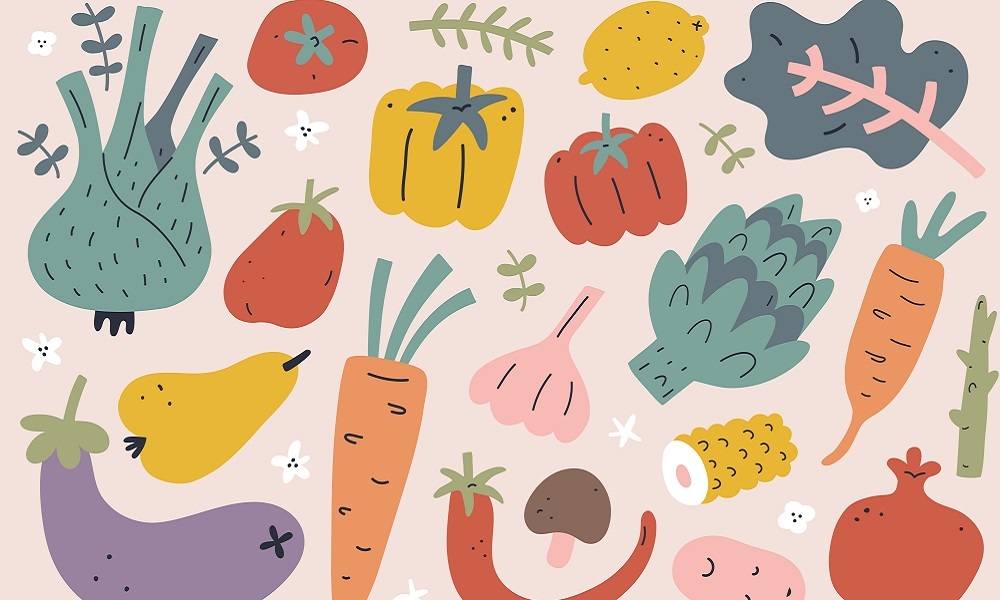The nutrient values of foods are altered when you cook and store them. But how much is lost? And, are there some cooking methods that are better than others?
Cooking foods will often make them more digestible and palatable; it destroys bacteria and other harmful microorganisms; and it makes phytochemicals more available (Better Health Channel, 2012). It also tends to make foods tastier which, in the case of vegetables in particular, increases the likelihood that we’ll eat more of them.
Whichever method you use to cook foods, there will be some nutrient loss. There are several factors that will affect the nutrient loss, including the temperature, the cooking time and the water volume that is used.
Dr Evangeline Mantzioris is the Program Director of the Nutrition and Food Sciences Degree at the University of South Australia. She is an Accredited Practicing Dietitian and Sports Dietitian. She says that another factor affecting nutrient loss is how fresh the food is to begin with.
‘When it comes to nutrients, it’s hard to talk specific losses because it depends on how fresh the vegetable is that you’re cooking, how long it has been since it was picked, and then how long you cook it for,’ Mantzioris tells Wellbeing by Teacher.
‘If all the cooking times are similar, you’ll find that vitamin C is the one that is lost really quickly through the heating process. And, if you cook the substance in water that is then drained, you’re also having nutrient losses in the water that’s drained away. So immediately you can see that something like steaming or microwaving is a better method to preserve the nutrients because you don’t lose it in the water. In a stew or a casserole where the food is cooked within the fluid, and the fluid is kept as part of the meal, that is better than boiled vegetables where the water is thrown away.’
Eating raw foods
A raw food diet is almost entirely plant-based and includes fruits, vegetables, nuts, seeds and grains in their natural uncooked state. Mantzioris says that while it’s true that eating raw foods means you’re ingesting the enzymes in these foods, none of them are going to survive the highly acidic conditions of your stomach anyway, as it all gets broken down to amino acids.
‘There’s really no justification to eat solely raw vegetables in your diet. You’re not going to increase your bioavailability of the nutrients, but also it’s really difficult to eat that level of vegetables every day.’
Mantzioris adds another thing about cooking foods is, it often kills the bacteria in them. ‘With raw foods, you’ve got to be really careful about cleaning the vegetables really carefully and making sure that no dirt is still on them, which may have micro-organisms like listeria monocytogenes or Hepatitis A on it.’
Blanching
Blanching is where you boil vegetables and then you freeze them quickly, or put them in cold water or ice to bring down the temperature. ‘It’s a really good method, because what it does is it stops the continual cooking and degradation of the vegetable and it stops it becoming ultra mushy. But it then retains the nutrients as well because the nutrients don’t continue to degrade,’ Mantzioris says.
Frying
Frying foods often happens at high temperatures, so you’ve got a higher risk of degrading vulnerable nutrients like vitamins, Mantzioris says.
Food storage – what’s the best way?
Water-soluble vitamins (B-group and C) are more unstable than fat-soluble vitamins (K, A, D and E) during food processing and storage (Better Health Channel, 2012). It is therefore important to store foods properly, keeping cold foods cold and sealing some foods in airtight containers.
When it comes to storing foods, Mantzioris says the best method is freezing. ‘People have been averse to using frozen vegetables but they’ve probably got higher nutrient levels than the fresh vegetables you’re buying in store, because vegetables are frozen at the time of harvest.
‘So take for example peas, they’re harvested and frozen straight away and then they’re sent to supermarkets and you buy it and you store it in your freezer. So it stops all degradation, it stops bacteria growing, it stops viruses growing and it stops nutrient losses,’ she says.
Food processes
Canning
When a food is canned, it is heated inside the can to kill dangerous microorganisms and then sealed in a sterile environment.
‘Canning is really good in terms of microbiological safety, but as we talked about earlier, using heat in the process is going to reduce the nutrient levels in it somewhat. But what it also does is it increases the availability of the supply of that fruit or vegetable throughout the whole year,’ Mantzioris says. ‘From a food waste and environmental perspective, it means that foods that are grown locally can be preserved for a long time.’
Pickling
Pickling is where either salt or vinegar is used to stop the growth of the bacteria. ‘Over time you will get nutrient losses with this as well and it’s probably not a big way that people eat vegetables at the moment. It’s probably more what you call the condiments that go onto a meal that we use pickles for, so pickled onions or cucumbers,’ Mantzioris says. ‘It also changes the taste of the food and it adds a different taste dimension into meals that people are cooking.’
Fermenting
Much like pickling, fermenting foods transforms the flavour and shelf life of ingredients. ‘Fermenting is a really great thing because you’re using bacteria to change the conditions in which the food is being kept,’ Mantzioris says. ‘What happens in the fermentation process is nutrients change. Those nutrients, for example in green tea, have got health benefits. And when green tea is fermented and becomes kombucha, these nutrients change to form new nutrients which may also have health benefits.’
Dehydrating
Food dehydration is a process of reducing moisture of food to low levels for improved shelf life. It also reduces the risk of bacteria growing. As with all the other methods, you get small losses of nutrients when you expose the food to heat. ‘The higher the temperatures, the more loss you will get. But even if it’s dehydrated at 60 degrees, which is what the normal temperature is that people dehydrate at, you still lose a lot of the vitamin C. Vitamin C is really susceptible to heat and so that’s the major nutrient that is lost,’ Mantzioris says.
When eating dehydrated fruits and vegetables, she adds it’s important to be mindful of what the equivalent would be in a fresh food format.
‘Using the example of a dried apricot, I know it’s quite easy to eat five or six halves; I love the taste of it. But, what that is equivalent to is eating four or five fresh apricots. You might lose some of the vitamin C and vitamin B but the kilojoules don’t go, they’re still there. When you take the water out, 100 grams of dried fruit is not equivalent to 100 grams of fresh fruit anymore.’
In conclusion
In 2017-18, the National Health Survey found that only 7.5 per cent of Australian adults met the guidelines for recommended daily serves of vegetables (five to six serves for men depending on age, and five for women).
Mantzioris says that while different cooking methods will always have nutrient losses, you should eat food in the way that you’ll most enjoy it.
‘Eat both raw and cooked vegetables in a manner that you enjoy eating them, which means you’ll eat a lot of them. It’s a matter of having balance and variety in your day,’ she says.
References
Australian Bureau of Statistics. (2018). National Health Survey: State and territory findings. https://www.abs.gov.au/statistics/health/health-conditions-and-risks/national-health-survey-state-and-territory-findings/2017-18
Better Health Channel. (2012). Food processing and nutrition. https://www.betterhealth.vic.gov.au/health/HealthyLiving/food-processing-and-nutrition
How do you care for your own health and wellbeing? Do you have a story you’d like to share with Wellbeing by Teacher? Here’s a handy guide on how to get started.


